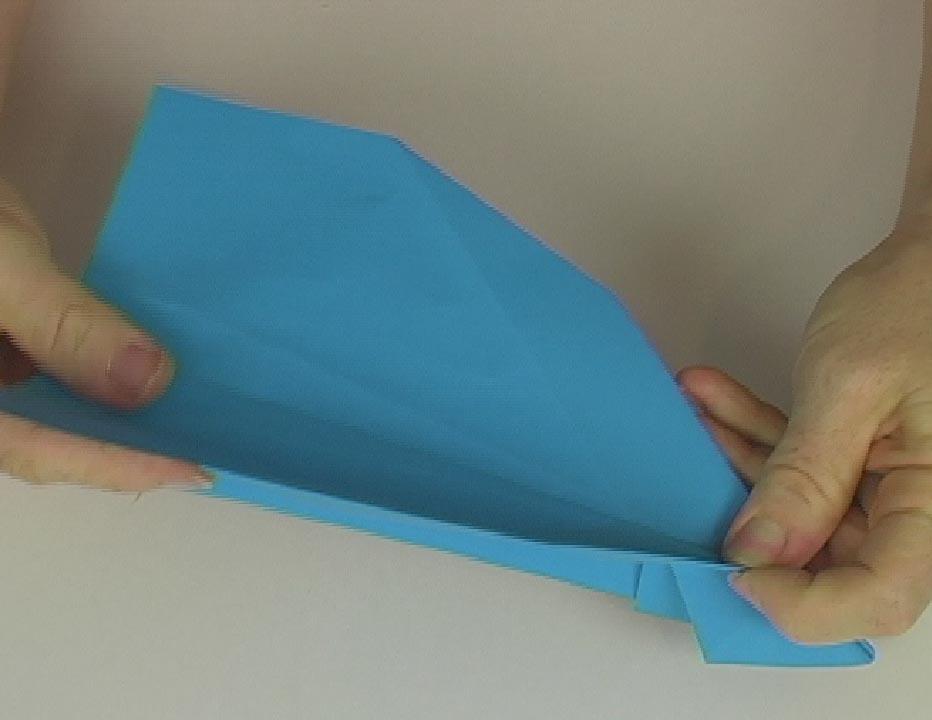How does an airplane remain stable during flight? Positive stability means that the airplane is designed so that if the pilot jams on the controls during straight and level flight (in other words, pitch up hard), and then let go, the airplane will more or less return to straight and level flight.
Let's make another favorite flyer of mine...
Please login or register to read the rest of this content.
Let's make another favorite flyer of mine...
Please login or register to read the rest of this content.


Both my 14 and 18 year old boys loved the paper airplanes in the intro DVD. I can’t get them to stop throwing them around the house all week. We will definitely be using your program more as we have more time!
Hmmm… it seems to be working from this computer I’m using here. Make sure you are logged in, or the video won’t play. If you still have trouble, try switching to IE or Firefox (whichever you’re not using), or try a different computer. Let me know how it goes!
Aurora
I can’t get the video to work
Thanks for catching that… we’ll see if we can edit that soon so it makes more sense.
This worked for us but with difficulty. I realized your video explanation didn’t match the required folding techniques. For the second fold, you said to fold down the “:opposite” corner but actually we needed to fold down the “adjacent” corner.
When I tried to do this the first time, I followed your explanation, not really watching the video, trying to do it simultaneously with you, and it sure didn’t work! Then I realized you mis-spoke. I imagine that was a source of difficulty for some people.
Marcelle
Deanna Betts wrote: “Step 2– after we make the X– are you suppose to fold the paper over so it fits each line of the X perfectly? How accurate do you have to be? I finally was able to fold a plane sort of like your example but I didn’t follow the x folds (in step 2) so it didn’t fly quite right…”
The trick to any paper airplane, be it dart, stunt, or glider, is in the tweaking. In order to turn a disappointing nose-diver into a stellar barrel-roller, you’ll need to pay close attention to your dihedral angle (angle the wings make with the horizon) and elevator angle (pinching up or down to the tail section). Here’s how we do it:
• Throw your airplane. Notice if you threw it hard, medium, or easy. Try modifying the throw to see which one works better for this particular airplane design. Stunt planes tend to work better with an easy throw and jets zoom with a fast throw.
• Now make the wing dihedral neutral (level with the horizon). Pinch up on the elevators a tiny bit and give it another like the throw that worked best last time.
• If the plane nose dives sharply, give it more of a pinch up on the elevators. If it nosed up first, then pitched down and crashed, you’ve got too much ‘up elevator’ in the back. What happens when you pinch one elevator up and one down?
• If the airplane still won’t fly correctly, then check your symmetry. Are your wings exactly the same size and shape? When you fold your airplane, do the wings sit right on top of each other? Most airplanes don’t like being asymmetrical, and it’ll show up when you try to fly.
Step 2– after we make the X– are you suppose to fold the paper over so it fits each line of the X perfectly? How accurate do you have to be? I finally was able to fold a plane sort of like your example but I didn’t follow the x folds (in step 2) so it didn’t fly quite right.
My child gave up :))). I was hoping that if I could figure it out– I might be able to take him through the steps.
I never was a good paper airplane maker so that probably has a lot to do with it. (stating that we had a great time with the next plane– no problems at all. Found the cp and the cg– and spent time throwing them all over the house.)
Deanna Betts wrote: “I can’t fold this!!!!!!”
Where are you having the trouble?
I can’t fold this!!!!!!
it almost flies straight!